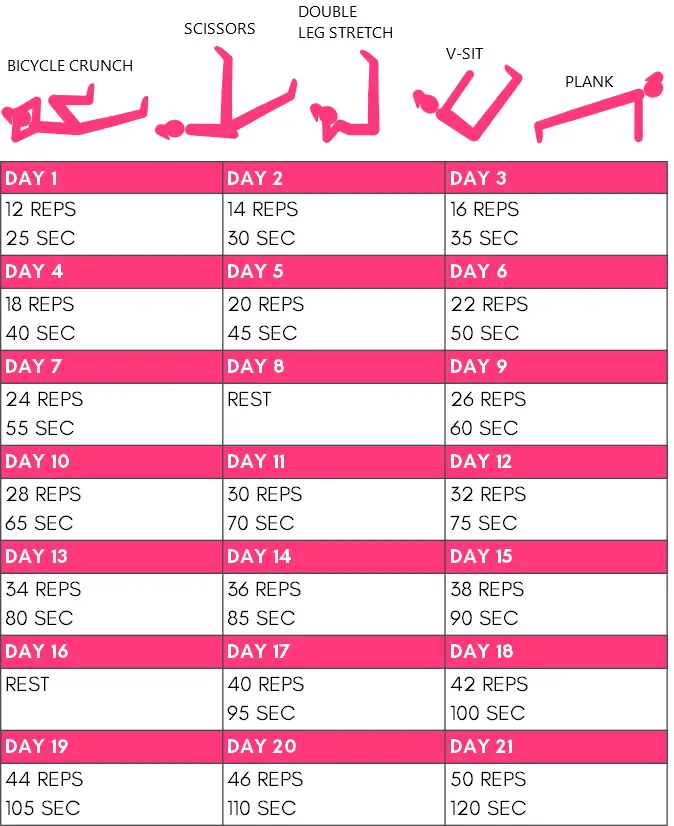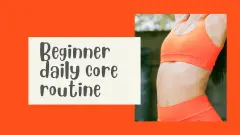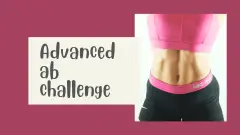Give your abs some extra work with this 21 day core challenge, which will get you up to a total of 200 reps plus a 2 minute plank hold by day 21. It’s not a beginner level challenge – you need to have some ab strength already. If you’re looking for a challenge suitable for beginners, then try this 100 day challenge which will gradually build up your abs.
About the challenge
Intensity: intermediate level
Benefits: trains all the core abdominal muscles
Safety: please read the general safety information here. Please also be aware that static contractions like plank holds can cause an increase in blood pressure. This is not a problem for healthy individuals, but if you have high blood pressure it’s not advisable to do static holds.
What you need: you need an exercise mat, or some other form of cushioning for your spine. See an exercise mat buying guide here.
21 day core challenge chart
There are 5 exercises in the challenge: bicycle crunch, scissors, double leg stretch, V-sit and plank. The chart shows the reps for each exercise every day (and hold times for the plank). Instructions for the exercises are below the chart.
Exercise instructions
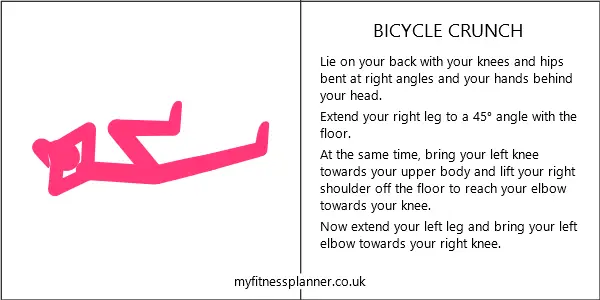
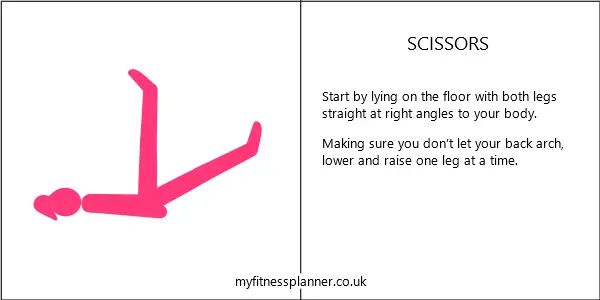
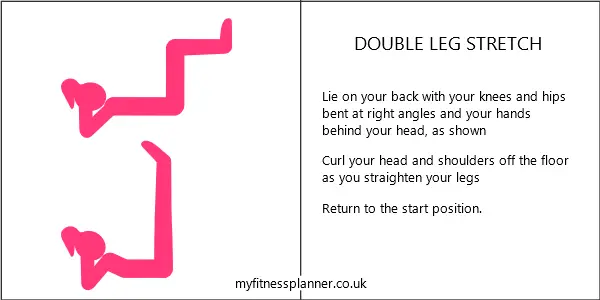
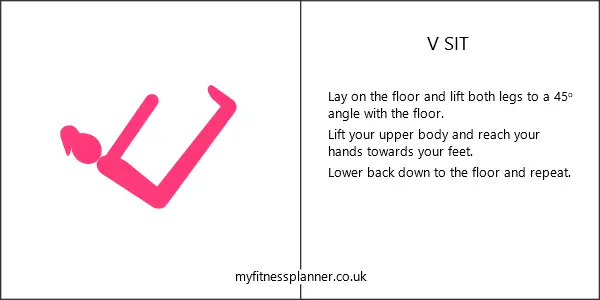
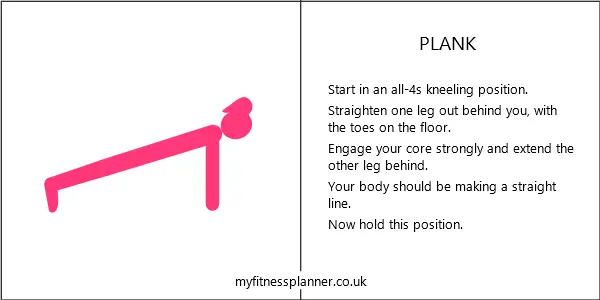
The plank hold – benefits and limitations
The plank exercise perhaps the best known exercise for strengthening the core muscles, but while it does have core training benefits, there are also limitations to “planking” for core strength.
Benefits of the plank exercise:
-
Engages the deep core muscles: The plank is an effective way to strengthen the core muscles, which provide stability and support for the spine and help prevent back pain.
- Improved balance and stability: Engaging the core muscles during the plank exercise can improve balance and stability, reducing the risk of falls and injuries.
-
Engages multiple muscle groups: The plank exercise is a full-body exercise that engages multiple muscle groups.
Limitations of the plank exercise:
-
Improper form: Improper form during the plank exercise can strain the neck, back, and shoulders. Unfortunately, poor form is a common problem. It is important to maintain a neutral spine and engage the core muscles throughout the exercise, keeping the legs and back in a straight line.
-
Static contraction: The plank exercise is an isometric exercise, meaning the muscles are engaged in a static position. The muscles are therefore only trained in one position.
- Not a complete core workout: The plank exercise focuses primarily on the anterior core muscles. While it is an effective exercise for strengthening these muscles, it is important to incorporate exercises that target other core muscles, such as the obliques and lower back muscles.
-
Not suitable for everyone: The plank exercise may not be suitable for individuals with certain medical conditions, such as back pain or injuries, or pregnant women.
Related to 21 day core challenge
Further reading
Mayo Clinic – Are isometric exercises a good way to build strength?
5 exercises to work all layers of the core abdominal muscles – 21 day core challenge for intermediate/advanced exercisers
